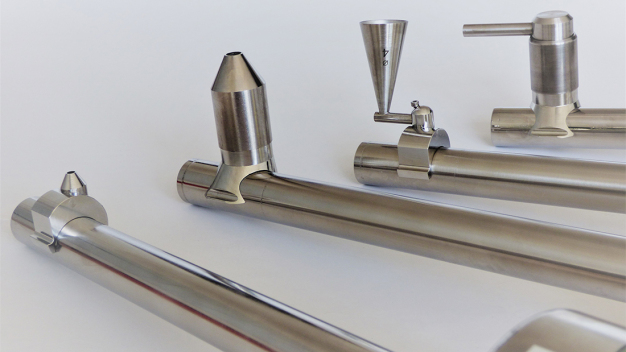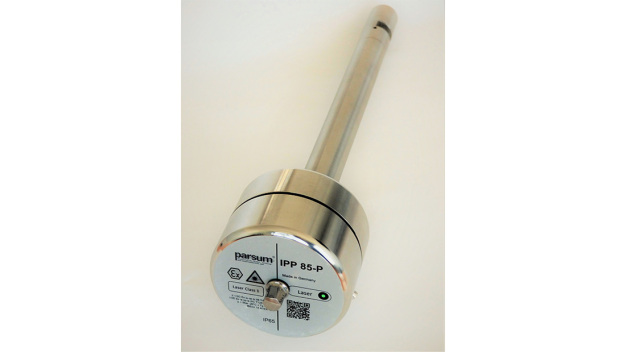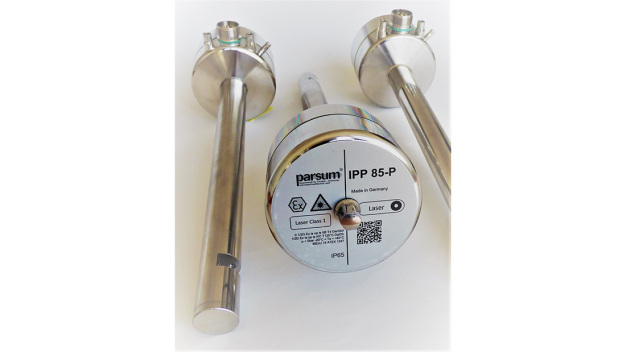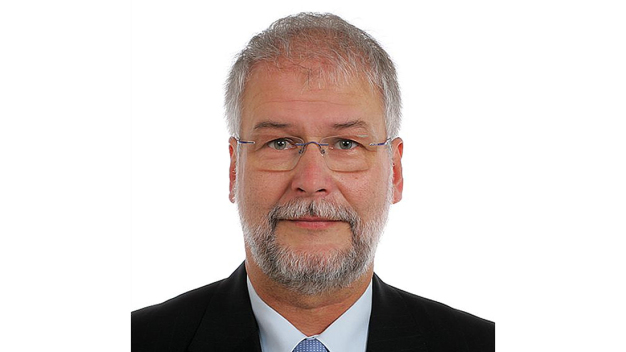- Trade fair
Tablet pressing to espresso grinding – even the finest powders are no longer a problem: New inline probe measures particle sizes from 20 µm continuously inside the process
Easy installation and configuration thanks to process wizard and integrated memory
Before powders, such as active ingredients and excipients, can be mixed, granulated and pressed into a tablet or processed in some other way, they must be available in an exact particle size distribution. Thus, for the production of high-quality drugs, foods and fine chemicals out of fine powders, you need sensors that can measure very fast particles with high resolution in real time and under production conditions. However, up to now, such fine powders in particular, with particle sizes of less than 50 µm, have posed major challenges for inline particle measurement in granulation. Parsum GmbH has now solved this problem with its latest IPP 85-P inline particle probe. Thanks to an enhanced fiber-optic measurement method and adapted dispersion technology, it can reliably detect particles of 20 µm and above at speeds of up to 100 m/s in various processes. A new integrated memory module not only enables the probe to be uniquely identified, but also allows calibration or log data to be stored. For uncomplicated start-up, a new process wizard guides the user through the initial configuration of a new measuring point. Parsum presents the IPP 85-P along with its new accessories at this year’s ACHEMA.
“Under laboratory conditions, it is possible to determine all particle sizes very precisely,” says Stefan Dietrich, Managing Director of Parsum GmbH. “However, the big challenge is the measurement directly in the process under industrial conditions. The process measurement technology is exposed to fluctuating parameters and environmental influences such as different temperatures, vibrations or mechanical forces.” In particular, powders and granulates in the very small measuring range of less than 50 µm or those having a very broad particle size distribution have caused problems in inline measurement up to now. This is because the signal generated by the measuring optics loses focus as the particle size decreases, thus complicating accurate measurement results. Moreover, the increasing velocity of the particles caused by intensive dispersion with a strong stream of compressed air is very demanding on the resolution capability of the measuring optics and the subsequent signal processing. To improve the resolution for measuring such small and accelerated particles, one ideally increases the laser power. However, this will quickly reach its limits if intrinsic safety according to ATEX is to be ensured for measurement in EX zone 0/20, as required for pharmaceutical applications, for instance. Alternatively, the receiving electronics and evaluation can be designed to be more sensitive. “With our new IPP 85-P, even very fine powders with particles of 20 µm and more can now be measured inline, without ignoring the proportion of even smaller particles,” says Dietrich.
New dispersion principle and faster measurement technology
As an enhancement of the proven IPP 80-P, the IPP 85-P features two measuring ranges that can be switched between using the software: the original one for particle sizes between 50 µm and 6 mm and an additional one that covers 20 to 600 µm. Similar to its predecessor, the new inline probe, which is made entirely of stainless steel, does not contain any moving parts that would need to be set or adjusted. That makes it robust and easy to handle, rendering it highly suitable for use in industrial environments thanks to its intrinsic safety, IP65 protection class and temperature resistance up to 100 °C. “Compared to previous inline measurement technology, the IPP 85-P has succeeded in speeding up optics, electronics and evaluation processes as well as making them more efficient, so that even the fine measuring range can be precisely covered,” explains Dietrich.
In addition, Parsum has developed special dispensers to separate the tiny particles, and has designed the measuring system to handle their faster speed of up to 100 m/s. Unlike Parsum’s already well-proven inline dispersers, which use a gentle process to separate rather sensitive granules and agglomerates, the new models D32, D34 and D37 have to deal with primary particles that adhere more firmly to each other, even in the measuring range below 50 µm. Yet, powerful dispersion is also very helpful with large particles, for example those coming from a grinding process, which tend to agglomerate and adhere. The much stronger shear forces required are generated by an injector that deflects the particle path using a very strong stream of compressed air. A part of the air stream is also used to prevent the particles from coming into contact with the optical windows of the sensor, so that cleaning the optical surfaces is required much less frequently. Continuously and very effectively keeping the measuring optics free of contamination opens up a wide range of applications for the Parsum probes equipped with inline dispersers to measure particles in continuous processes, such as screening and grinding processes, twin-screw pelletizing or roll compacting.
Easy handling thanks to integrated memory and process wizard
The integrated memory module is another innovation of the IPP 85-P. Securely built into the electronics unit, the digital interface contains all relevant information for unambiguous identification and automatic recognition of the connected probe. In addition, the sensor’s calibration and status data, associated certificates or even operating logs can be stored in the memory within the scope of the self-monitoring function, and can be read out for maintenance purposes. Since the calibration data is transmitted directly by the probe to the software, there is no need for error-prone manual assignment and, therefore, any risk of hardware confusion is eliminated. The new process wizard also assists users in setting up a new measuring point or a modified process. The menu-driven software guides users through the configuration, designating the most important processes and parameters, on the basis of which an optimal configuration file is then generated. “Our goal was to design the IPP 85-P to be just as robust and user-friendly as its predecessors in the IPP series. With the integrated memory and the process wizard, we were even able to exceed this claim,” Dietrich sums up.
At ACHEMA 2022 in Frankfurt am Main, Parsum will present the newly developed inline particle probe and the hardware and software accessories for the first time. The two managing directors Stefan Dietrich and Dr. Michael Köhler will be available for discussions and questions in Hall 4.1 at booth E72.
Parsum GmbH
09126 Chemnitz
Germany














